The DSR ProSeries Battery Charger is a professional-grade solution for battery maintenance and diagnostics. Designed for heavy-duty use, it offers a range of tools, including chargers, maintainers, and jump starters. Built to last, the DSR ProSeries is ideal for professionals seeking durable and reliable performance in demanding environments.
Overview of the DSR ProSeries
The DSR ProSeries is a professional-grade lineup of battery chargers, maintainers, and diagnostic tools designed for heavy-duty applications. Built to withstand rigorous use in demanding environments, these chargers are tailored for professionals who require reliable performance. The series includes advanced features such as multiple charging modes, diagnostic capabilities, and robust construction to ensure durability. Whether for automotive, marine, or industrial use, the DSR ProSeries delivers the power and precision needed to maintain and charge batteries efficiently. Its user-friendly design and comprehensive functionality make it a top choice for experts seeking a dependable solution for battery management.
Key Features of the DSR ProSeries Battery Charger
The DSR ProSeries Battery Charger boasts advanced features designed for professional use. It includes multiple charging modes to accommodate various battery types and sizes. Safety is prioritized with automatic shut-off to prevent overcharging. The charger also offers diagnostic capabilities to identify battery health issues. Built for durability, it withstands heavy-duty environments and includes thermal management for consistent performance. A high-contrast display ensures easy monitoring of charging progress. Additionally, the charger supports deep discharged battery recovery and is compatible with automotive, marine, and industrial applications. Its robust design and comprehensive functionality make it a versatile tool for professionals requiring reliable battery management solutions.
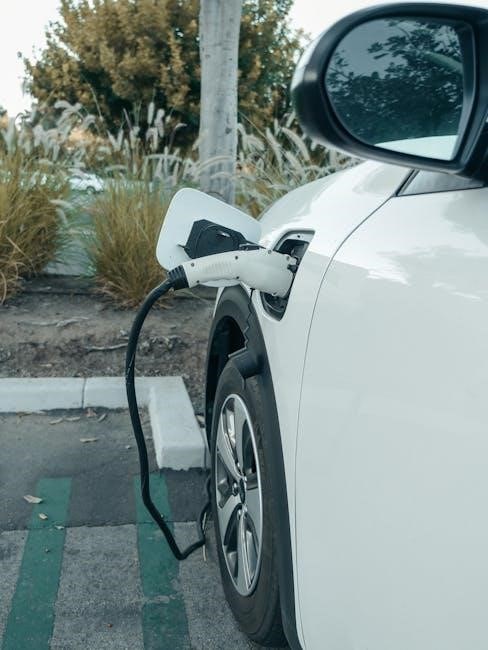
Setting Up the DSR ProSeries Battery Charger
Setting up the DSR ProSeries involves unboxing, initial inspection, and connecting to power. Ensure proper installation and prepare the battery for charging to ensure safe and efficient operation.
Unboxing and Initial Inspection
Start by carefully unboxing the DSR ProSeries Battery Charger and inspecting its contents. Ensure all components, including the charger, cables, and clamps, are included and undamaged. Examine the device for any visible wear or defects. Verify that the charger is suitable for your battery type and voltage requirements. Before proceeding, read the manual to understand the charger’s features and safety guidelines. Clean the workspace to prevent any debris from interfering with the setup. Properly organizing the cables and accessories will ensure a smooth and efficient charging process. This initial inspection is crucial for safe and effective operation of the DSR ProSeries.
Connecting the Charger to Power
Before connecting the DSR ProSeries Battery Charger to power, ensure the charger is placed on a stable, flat surface. Locate a suitable power outlet that matches the charger’s voltage requirements. Plug the charger into the power source, making sure the connection is secure and not damaged. Once powered on, the charger will enter standby mode, ready for use. Always follow the manual’s guidelines for power connection to avoid electrical hazards. Ensure the area is well-ventilated and free from flammable materials. Never overload the circuit or use extension cords that may compromise safety. Properly connecting the charger is essential for safe and efficient operation.
Preparing the Battery for Charging
Before charging, inspect the battery for signs of damage or wear. Clean the terminals using a wire brush to ensure good connectivity. Disconnect the battery from the vehicle, starting with the negative (-) terminal to prevent electrical shocks. Ensure the battery is placed on a stable, heat-resistant surface. Verify the battery type (e.g., deep cycle, standard) and select the appropriate charge mode on the charger. Wear protective eyewear and gloves for safety. Avoid charging near open flames or sparks. Never charge damaged or frozen batteries. Follow the manual’s guidelines for preparing specific battery types, such as AGM or lithium-ion. Proper preparation ensures safe and efficient charging.
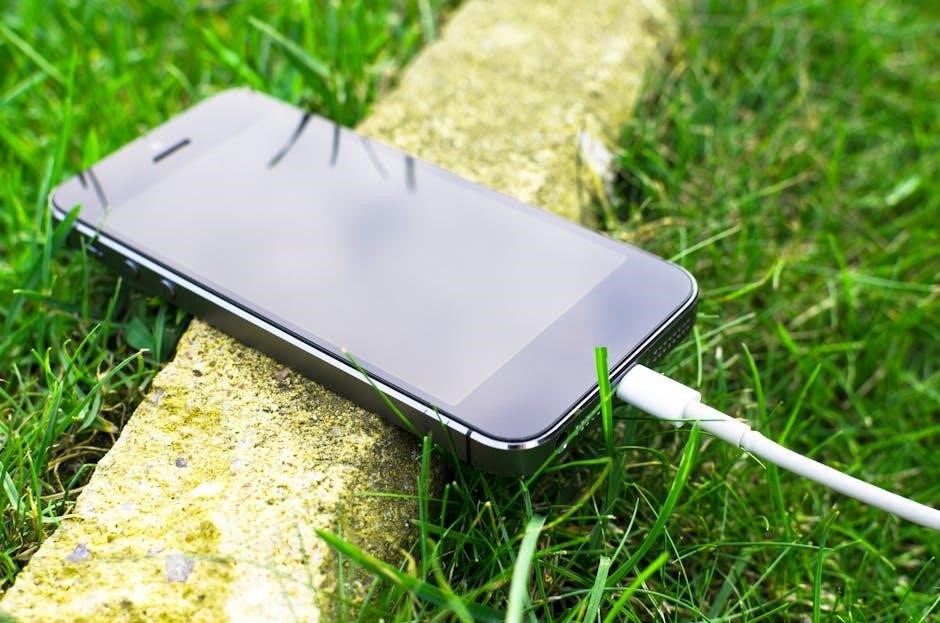
Safety Precautions and Guidelines
Avoid charging dry-cell batteries, as they may burst and cause injury. Always disconnect the charger from AC power before removing clamps from the battery terminal.
Important Safety Warnings
Never use the DSR ProSeries Battery Charger for charging dry-cell batteries, as they may burst, causing injury or property damage. Always disconnect the charger from AC power before removing clamps from the battery terminal. Ensure proper ventilation when charging to avoid hydrogen gas buildup. Avoid overcharging, as it can damage the battery and pose a safety risk. Keep the charger away from flammable materials and out of reach of children. Follow all safety guidelines in the manual to prevent accidents and ensure safe operation. Properly inspect cables and connectors before use to avoid electrical hazards. Failure to adhere to these warnings may result in serious injury or equipment damage.
Proper Handling of Batteries
Always wear protective gear, including gloves and safety glasses, when handling batteries. Inspect batteries for damage or leaks before charging. Ensure the battery is placed on a stable, non-conductive surface. Connect the charger clamps correctly: positive to positive, negative to negative. Avoid overcharging, as it can damage the battery and reduce its lifespan. Never charge a frozen or deeply discharged battery. Keep batteries away from open flames or sparks, as hydrogen gas produced during charging is flammable. Store batteries in a cool, dry place, away from metal objects that could cause short circuits. Proper handling ensures safety and extends battery life.
Avoiding Common Hazards
To ensure safe operation, avoid common hazards when using the DSR ProSeries Battery Charger. Never charge a damaged or leaking battery, as it may explode. Keep the charger away from water and moisture to prevent electrical shock. Avoid overcharging, as it can cause battery overheating and damage. Ensure the charger is placed on a heat-resistant surface. Do not charge batteries in an enclosed space, as hydrogen gas buildup can occur. Keep children and pets away from the charging area. Always follow the recommended charging times and settings to prevent battery stress. Regularly inspect the charger and cables for wear or damage. Proper precautions help prevent accidents and ensure reliable performance.
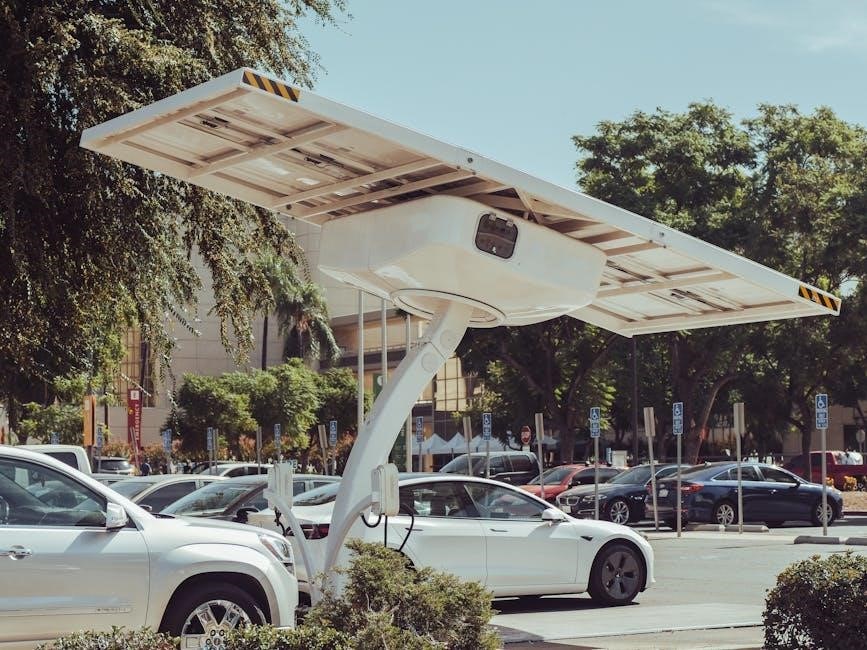
Charging Procedures
Follow the DSR ProSeries Battery Charger’s step-by-step guide for safe and efficient charging. Select the correct mode, monitor progress, and ensure proper battery preparation for optimal results.
Step-by-Step Charging Instructions
Follow these steps to charge your battery safely and efficiently:
- Connect the charger to the battery, ensuring terminals match (+ to +, ⎻ to -).
- Select the appropriate charging mode based on battery type and capacity.
- Plug in the charger and turn it on, verifying the display shows charging status.
- Monitor the charging process until completion, indicated by a full charge alert.
- Disconnect the charger from both the battery and power source to avoid overcharging.
Always refer to the manual for specific settings and safety guidelines.
Understanding Charging Modes
The DSR ProSeries Battery Charger offers multiple charging modes tailored for different battery types and needs:
- Standard Mode: Ideal for regular charging, balancing safety and efficiency.
- Fast Mode: Reduces charging time for situations requiring quick power replenishment.
- Maintenance Mode: Designed for long-term storage, preventing overcharging and preserving battery health.
- Deep Cycle Mode: Suitable for deeply discharged batteries, ensuring a full recovery.
- Trickle Charge Mode: Maintains optimal voltage without overcharging, perfect for ready-to-use batteries.
Selecting the correct mode ensures efficient and safe charging, tailored to your specific battery requirements.
Monitoring the Charging Process
The DSR ProSeries Battery Charger features an intuitive LCD display that provides real-time updates on the charging process. This includes battery voltage, current, and charge percentage. The charger also uses LED indicators to show the current charging status, such as red for charging and green for completion. Regularly monitoring these indicators ensures a safe and efficient charging experience. Additionally, the charger alerts users to any anomalies, such as overvoltage or overheating, through audible and visual warnings. Always observe the displayed information and follow the charger’s guidance to avoid potential issues. Proper monitoring helps maintain battery health and ensures reliable performance.

Troubleshooting Common Issues
Identify and resolve issues like error codes, uneven charging, or malfunctioning components. Check connections, verify power supply, and consult the manual for specific solutions.
Identifying and Resolving Charging Errors
When using the DSR ProSeries Battery Charger, errors may occur due to improper connections, faulty batteries, or charger malfunctions. Common error codes include “E1” for overvoltage and “E2” for short circuits. To resolve these, first ensure all cables are securely connected and free from damage. For “E1,” check the battery voltage against the charger’s specifications. For “E2,” inspect the battery terminals for short circuits. Restart the charger after addressing the issue. If errors persist, reset the charger by unplugging it for 30 seconds. Always refer to the manual for specific error code explanations and solutions to ensure safe and effective troubleshooting.
Common Battery Charging Problems
When charging batteries with the DSR ProSeries, common issues may arise, such as overcharging, undercharging, or slow charging. Overcharging can occur if the charger is left connected for too long, potentially damaging the battery. Undercharging may result from incorrect charger settings or interrupted power supply. Slow charging could be due to high-capacity batteries or outdated charger firmware; Additionally, battery overheating during charging is a concern, as it can reduce battery lifespan. To address these issues, ensure proper charger settings, monitor charging time, and avoid charging in extreme temperatures. Regularly updating the charger’s firmware and using compatible batteries can also prevent these problems.

Resetting the Charger
To reset the DSR ProSeries Battery Charger, first ensure the device is unplugged from both the power source and the battery. Locate the small reset button, typically found on the underside or rear of the charger. Using a paperclip or pin, gently press and hold the reset button for 5-10 seconds. Release the button and plug the charger back into the power source. The charger will now restart with factory settings. Note that resetting may erase any custom settings or profiles. If issues persist, consult the user manual or contact customer support. Always ensure the charger is in a safe, stable condition before performing a reset to avoid potential electrical hazards.
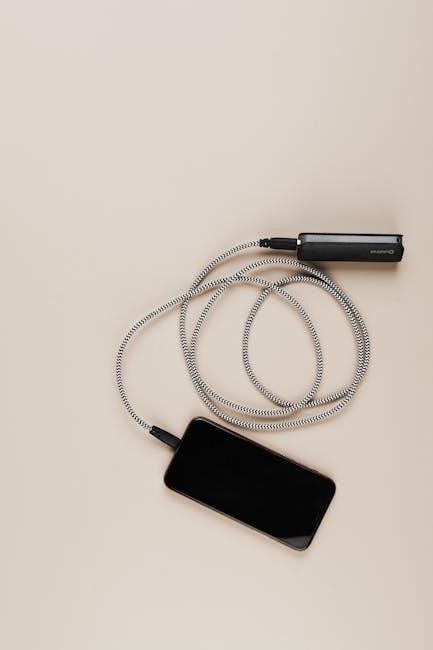
Maintenance and Care
Regular maintenance ensures optimal performance and longevity. Clean the charger, inspect for damage, and store it properly. Always follow manufacturer guidelines for best results.
Cleaning and Storing the Charger
Regularly clean the charger using a soft, dry cloth to remove dust and debris. Avoid harsh chemicals or abrasive materials that may damage the surface. For storage, ensure the charger is completely dry and free from moisture. Store it in a cool, dry place away from direct sunlight and flammable materials. Avoid stacking heavy objects on top of the charger. Before storing for extended periods, charge the battery to 50% capacity to maintain its health. Always inspect the charger and cables for damage before use after storage. Proper cleaning and storage ensure longevity and optimal performance of the DSR ProSeries charger.
Upkeeping the Battery Terminals
Regular maintenance of the battery terminals is crucial for ensuring proper charging and performance. Use a wire brush to clean terminals, removing any corrosion or debris. Apply a thin layer of petroleum jelly to prevent rust and improve conductivity. Inspect terminals regularly for signs of wear or damage. Avoid over-tightening terminal connections, as this could damage the battery or charger. If terminals are corroded, soak them in a mixture of baking soda and water before scrubbing. Cleanliness and proper upkeep ensure reliable connections and optimal charging efficiency. Neglecting terminal maintenance can lead to reduced performance and potential damage to the charger or battery.
Scheduling Regular Maintenance
Regular maintenance ensures the DSR ProSeries battery charger operates efficiently and prolongs its lifespan. Schedule inspections every 3 to 6 months to check for dust, debris, or wear on cables and connections. Clean the charger with compressed air monthly to prevent overheating. Every year, inspect the power cord and battery terminals for damage or corrosion. If the charger has calibration features, perform recalibration as recommended. Store the charger in a cool, dry place when not in use. Regular maintenance prevents unexpected downtime and ensures reliable performance. Create a maintenance schedule to track inspections and servicing, guaranteeing optimal functionality and safety over time.
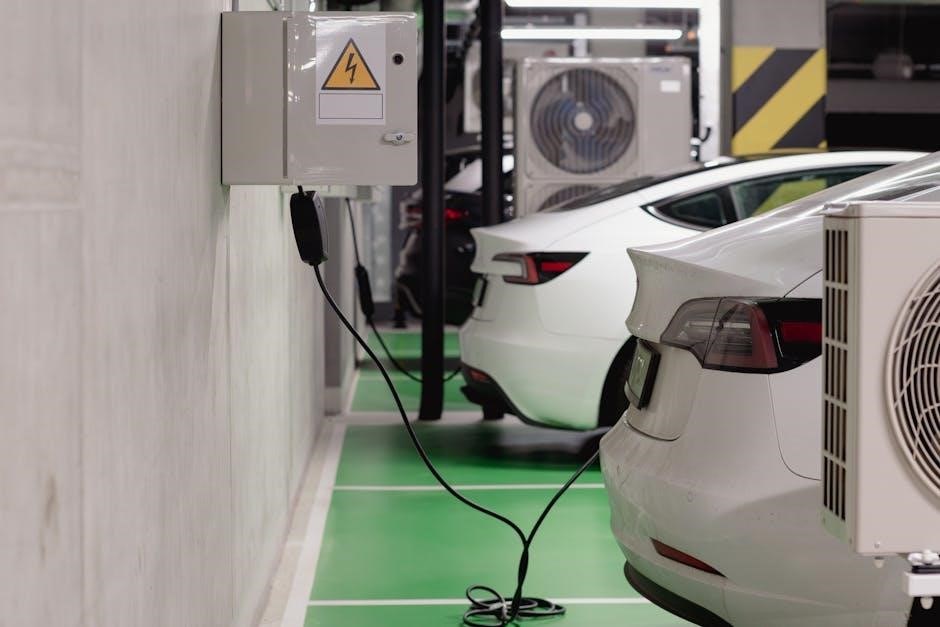
Model-Specific Instructions
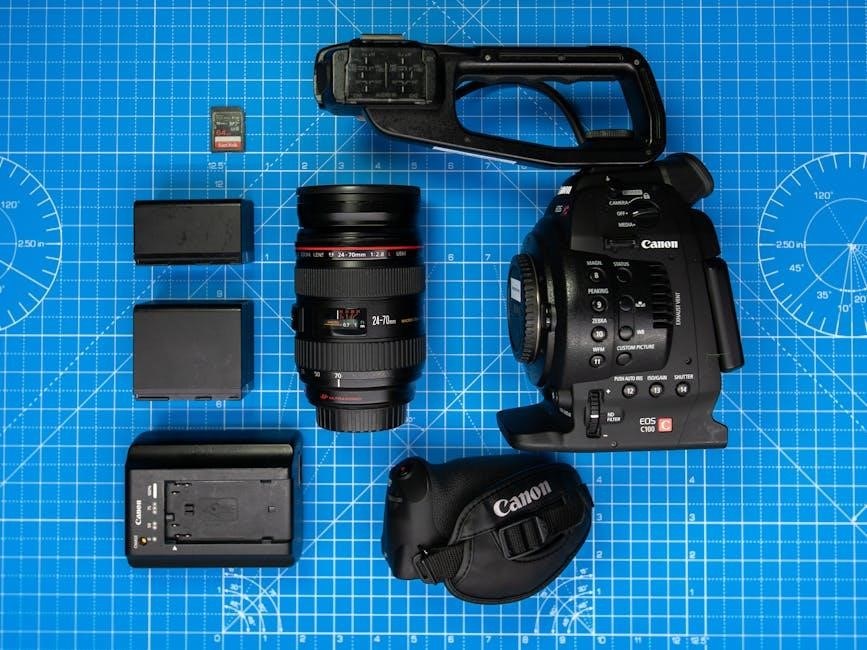
Refer to model-specific guides for detailed instructions tailored to your DSR ProSeries charger. Instructions vary by model (e.g., DSR121, DSR122, DSR123) to ensure compatibility and safety. Always consult your manual for accurate procedures to avoid errors and maintain optimal performance. Model-specific instructions cover unique features, settings, and troubleshooting tips for your exact charger model, ensuring precise and effective operation. This section provides targeted guidance to maximize efficiency and safety for your specific DSR ProSeries battery charger. Follow these instructions carefully to achieve the best results. Regular updates may be available for your model, so check periodically for new information or firmware updates. Properly following model-specific instructions ensures your charger functions as intended and extends its lifespan. Familiarize yourself with the unique characteristics of your DSR ProSeries model to optimize its performance and safety. This section is dedicated to helping you get the most out of your specific charger. By adhering to model-specific guidelines, you can prevent potential issues and ensure reliable charging. Keep your manual handy for quick reference when working with your DSR ProSeries battery charger. Model-specific instructions are designed to address the particular needs and capabilities of your charger, ensuring a seamless user experience. Stay informed about any model-specific updates or recommendations to maintain peak performance. Your DSR ProSeries charger is designed for durability and efficiency, and following model-specific instructions will help you realize its full potential. Always prioritize model-specific guidance when operating, maintaining, or troubleshooting your charger. This ensures safety, efficiency, and longevity. Model-specific instructions are your key to unlocking the full capabilities of your DSR ProSeries battery charger. Use them wisely to achieve professional-grade results.
DSR121 Battery Charger Instructions
The DSR121 charger is designed for efficient and safe charging of various battery types. Begin by connecting the charger to a power source and ensuring the battery terminals are clean. Select the appropriate charging mode (e.g., Li-ion, NiMH, or lead-acid) using the intuitive interface. For Li-ion batteries, set the voltage to 3.7V or 4.2V, depending on the battery type. Monitor the LCD display for real-time charging status, including voltage, current, and capacity. Avoid overcharging by stopping the process once the battery reaches 100%. Disconnect the battery immediately after charging. For optimal performance, consult the manual for specific settings tailored to your battery. Always follow safety guidelines to prevent damage or hazards. Regularly update the charger’s firmware for enhanced functionality. Store the charger in a cool, dry place when not in use. This ensures longevity and reliability. Adhere to these instructions for a seamless and safe charging experience with the DSR121.
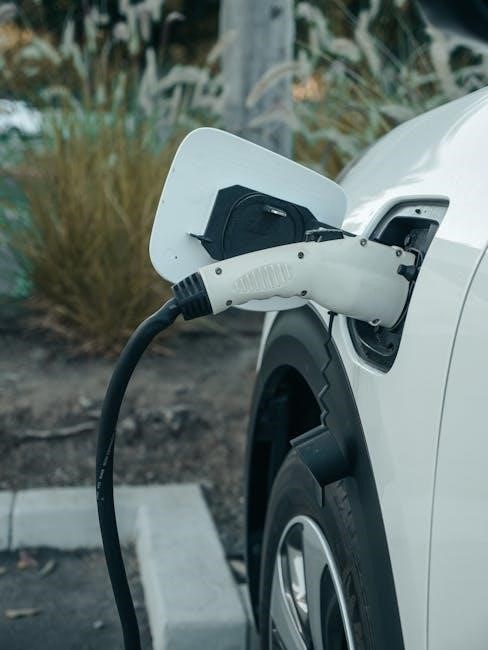
DSR122 Battery Charger Instructions
The DSR122 charger offers advanced charging capabilities for a wide range of battery chemistries. Begin by connecting the charger to a power supply and ensuring the battery terminals are securely attached. Use the touchscreen interface to select the battery type (Li-ion, NiMH, or lead-acid) and set the desired voltage and current. For LiPo batteries, enable balance charging to ensure cell equilibrium. Monitor the charging progress via the LCD display, which shows real-time data such as voltage, current, and time. The charger features overcharge protection and automatic cutoff for safety. Once charging is complete, disconnect the battery promptly. Store the charger in a cool, dry environment to maintain performance. Regular firmware updates are recommended for optimal functionality. Follow these steps to ensure safe and efficient charging with the DSR122.
DSR123 Battery Charger Instructions
The DSR123 charger is designed for compatibility with a variety of battery types, including Li-ion, NiMH, and lead-acid. Start by connecting the charger to a power source and ensuring the battery terminals are clean and securely attached. Use the intuitive LCD display to select the appropriate battery type and charging mode. For LiPo batteries, enable balance charging to maintain cell balance. The charger features dual-channel functionality, allowing simultaneous charging of two batteries. Monitor charging progress in real-time, with detailed metrics such as voltage, current, and capacity. The DSR123 includes safety features like overcharge protection and thermal monitoring. Once charging is complete, disconnect the battery to prevent trickle charge wear. Regularly update the charger’s firmware to access new features and improvements.